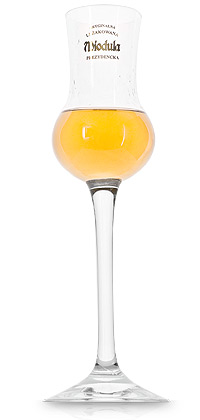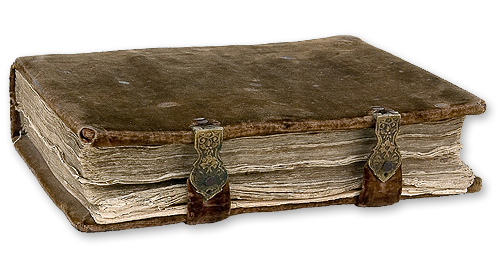
How to enjoy
"Original Matured Miodula Presidential Blend"
- Pour an appropriate 'Polish measure' of Miodula into a glass.
- Holding the glass in your hands, warm up the glass with Miodula.
- Sit comfortably in an armchair and delight in the liquor's amber hue.
- Bring the glass up towards your nose and inhale the aroma of Miodula, which will surprise you with its inimitable bouquet.
- Moisten your palate with the drink. Tasting it, spread the Miodula around your mouth so as to capture the unique flavour and aroma of this splendid beverage.
A description of Miodula from the book The World of Spirits and Cocktails
MIODULA PRESIDENTIAL BLEND:
This honey liqueur, based on vodka and matured in barrels, is based on a recipe from the 18th century. Miodula is one of the most significant Polish spirits, appreciated for centuries by Polish monarchs. Currently Miodula Presidential Blend is served to visiting heads of state at official meetings. Each bottle of this 40%, limited edition is produced by Mundivie S.A., and then hand labelled and numbered. Apart from first-class Polish vodka, the drink contains honey of forest bees, water from the mountain springs of the Wisła River and a secret mixture of herbs and spices. It is served with ice, although it may also be imbibed warm.
Source: A.Domine, Alkohole Świata - Uniwersalny podręcznik barmana (The World of Spirits and Cocktails),
Wydawnictwo Olesiejuk 2009, str.637

Inlaid wood
In its form, Miodula refers to ancient decorative elements. The window shape in which the label is found, as well as the remaining elements, such as the lettering, are related to Polish history. In order to follow this tradition, we decided to make use of inlaid wood - an ornamental technique that has been forgotten due to the amount of work involved and the cost of materials used.
Inlaid wood, or marquetry - is a decorative technique in which an image is created by placing on the surface of wooden objects (especially furniture) other types of wood, sometimes dyed. Elements are put in the place of fragments removed from the object's surface. This technique, known in ancient times, was developed in the Baroque and Renaissance periods. The oldest remaining object is a cedar sarcophagus from around 2000 BC.
Wood inlay particularly flourished in Toruń in the 18th century. Although the technique had been present in this city since the second half of the 16th century, it was around the year 1730 that became the dominant ornamental technique in Toruń's artistic woodwork. It was used for decorating all elements of bourgeois interior furnishings (e.g. hall wardrobes, wall cupboards, clock cabinets, trunks, boxes, panelling, doors) as well as representative buildings - town halls, churches (e.g. portals, doors, panelling).
Cases for the Original Matured Miodula Presidential Blend and Miodula Staropolska (Old Polish) are made of a dozen or even a few dozen hand-placed elements originating from various types of wood. The production process of one case lasts about 3-4 hours. This results in a unique product, being a complement to the great work which is Miodula.
Although it is not known when the first alcohol was put into casks, it is known that Polish oak, infusing the alcohol, has an exceptionally beneficial effect on its taste. One of the most well-known coopers in Central-Eastern Europe at the beginning of the 20th century was the master cooper from Tarnów, Józef Podgórski, born in 1868, who repaired and built casks for the wine, spirits, food and chemical industries. His products were used in the area of today's Austria and Hungary.
The period of 1880 - 1930 was a time of various experiments in the field of maturing rum, cognac and whisky. And it has been known since the end of the 19th century that storing vodka in oak barrels beneficially influences its quality.
At that time the master cooper, Józef Podgórski, used oak staves, classically burnt, which gave beverages a golden colour, a spicy aroma and the scent of freshly-brewed coffee.
Barrels
.jpg)
The oak for barrels must have a diameter of at least 50 cm, so it must be at least 100 years old. The older and bigger, the better; it may be as old as 200 years. The more slowly it grew, the better. The wood for barrels is cut into quarters. The grain of the wood should be straight so that the staves have the proper durability, do not break when bending, and the casks made with them do not leak. Larch must also be around 100 years old and have a 50-cm diameter so that it is suitable for staves. And it's more difficult to obtain than oak.
Trees that are too young contain chemical compounds which are released into the stored alcohol, ruining its taste. The quartered wood is cut into staves, which lie for a minimum of three years in the open air, undergoing a seasoning process. After this time, the staves are cut into lengths, depending on the size of the barrel, the edges are diagonally profiled so that after placing in the barrel they fit together on its whole surface.
This is a difficult operation as leak-proof barrels depend on it. No glues, silicons or other chemicals are used in barrel production, only calamus (sweet rush) leaves. That's how it was formerly done. One has to know when to gather these leaves and how to dry them. So the barrel is composed of three types of material: wooden staves, calamus and steel, manually riveted rims. The barrels are burnt inside, and the degree of burning (e.g. to a tobacco or chocolate colour, which depends on the temperature of burning) is adjusted to the type of Miodula which is to be stored in it. When ordering a cask, we must determine how it is to be burnt and what kind of Miodula is to be stored in it, as the flavour depends on this. This knowledge: what type of wood to use for which barrel, how to construct it, how to burn it depending on its purpose - is not easy to obtain. Skilled coopers gather this experience over the years and pass it on from generation to generation.